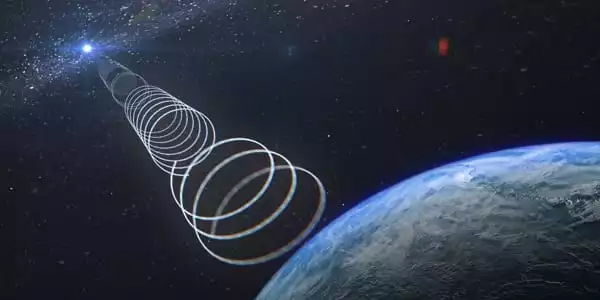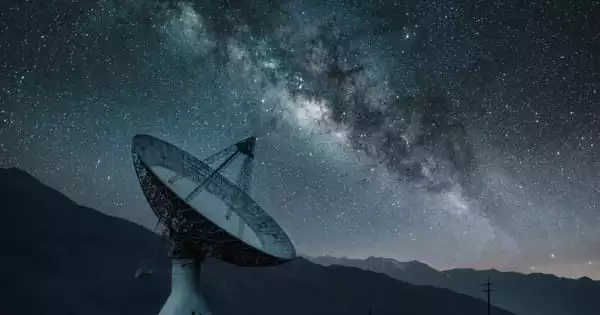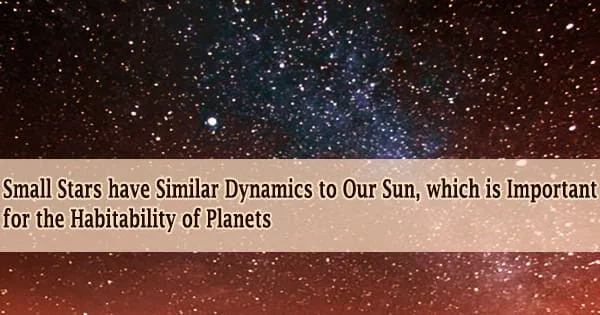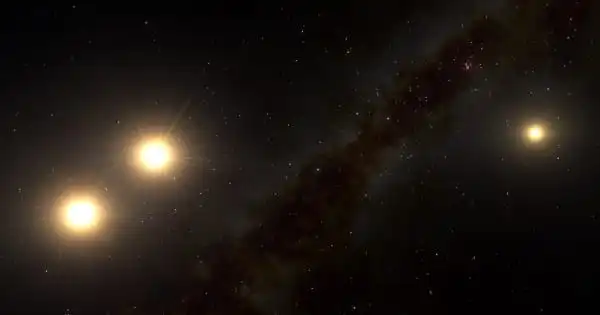Scientists have discovered radio waves emitted by distant stars, which could indicate the existence of hidden planets. The discovery was made by the Low-Frequency Array (LOFAR), the world’s most powerful radio telescope, which is located in the Netherlands.
Scientists have discovered stars that are unexpectedly blasting out radio waves, possibly indicating the existence of hidden planets, using the world’s most powerful radio antenna. Dr. Benjamin Pope of the University of Queensland and colleagues at the Dutch national observatory ASTRON have been searching for planets using the world’s most powerful radio telescope, the Low-Frequency Array (LOFAR) in the Netherlands.
The research, according to Pope, “could potentially lead to the discovery of planets throughout the galaxy.” He went on to say that while it had long been known that planets in our solar system could emit powerful radio waves as a result of their magnetic fields interacting with solar winds, radio signals from outside the solar system had yet to be detected.
We discovered stars that are unexpectedly blasting out radio waves, possibly indicating the existence of hidden planets, using the world’s most powerful radio antenna.
Dr. Pope
The team concentrated their research on red dwarf stars, which are much smaller in size than the Sun. These stars are known to have extremely high magnetic activity, which causes radio emissions and stellar flares. Some old, magnetically inactive stars also appeared.
“We’ve discovered signals from 19 distant red dwarf stars, four of which are best explained by the presence of planets orbiting them,” said Dr. Pope. “We’ve known for a long time that planets in our solar system emit powerful radio waves when their magnetic fields interact with the solar wind, but radio signals from planets outside our solar system had yet to be detected. This discovery is significant for radio astronomy and may lead to the discovery of planets throughout the galaxy.”
Previously, astronomers could only detect the most distant stars in steady radio emission, and everything else in the radio sky was interstellar gas or exotica-like black holes. When radio astronomers conduct their observations, they can now see plain old stars, and with that information, we can search for planets that orbit those stars.
The researchers concentrated on red dwarf stars, which are much smaller than the Sun and are known to have an intense magnetic activity that causes stellar flares and radio emission. However, some old, magnetically inactive stars appeared, throwing conventional wisdom into question.

Dr. Joseph Callingham of Leiden University and ASTRON, the discovery’s lead author, stated that the team is confident that the signals are the result of a magnetic connection between stars and unseen orbiting planets, similar to the interaction between Jupiter and its moon, Io.
“Our own Earth has aurorae, commonly known here as the northern and southern lights, that also emit powerful radio waves as a result of the planet’s magnetic field interacting with the solar wind,” he explained. However, aurorae from Jupiter are much stronger because of their volcanic moon. Io is ejecting material into space, polluting Jupiter’s atmosphere with particles that cause unusually powerful aurorae.
“Our model for this radio emission from our stars is a scaled-up version of Jupiter and Io, with a planet encased in a star’s magnetic field, feeding material into vast currents that power bright aurorae in the same way. It’s a sight that has piqued our interest from lightyears away.”
The research team now wanted to confirm the proposed planets do exist.
“We can’t be certain that the four stars we suspect have planets are planet hosts, but we can say that planet-star interaction is the best explanation for what we’re seeing,” Dr. Pope said. “Following-up observations have ruled out planets more massive than Earth, but there’s nothing to say a smaller planet wouldn’t do the same.”
The LOFAR discoveries are just the beginning, but the telescope can only monitor stars that are relatively close by, up to 165 lightyears away. The team predicts that once Australia and South Africa’s Square Kilometre Array radio telescope is completed and operational in 2029, they will be able to see hundreds of relevant stars at much greater distances.
This research shows that radio astronomy is on the verge of revolutionizing our understanding of planets beyond our Solar System. The team is now attempting to confirm the existence of the hidden planets, stating that while subsequent observations have ruled out the planets being larger than Earth, smaller planets could most likely be in orbit around the stars.
Previously, astronauts could only detect the nearest stars through steady radio emissions. Radio astronomers can now see plain old stars and use the data to search for planets orbiting the stars.
















